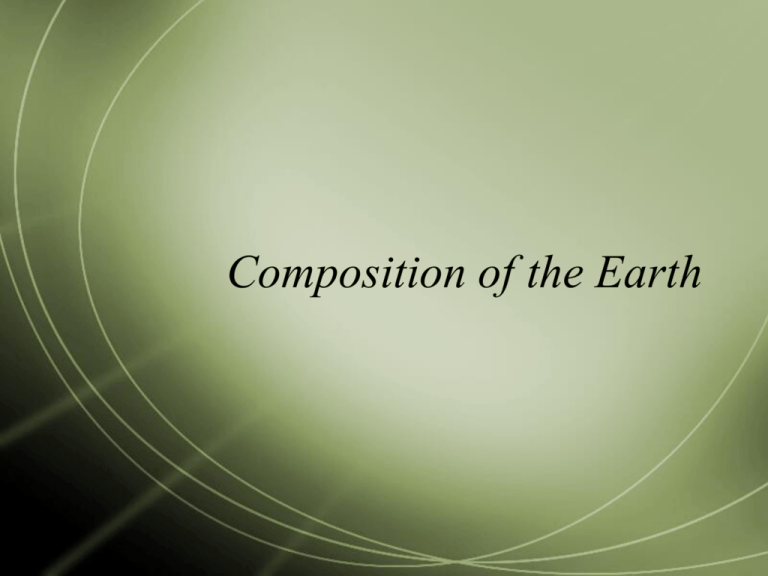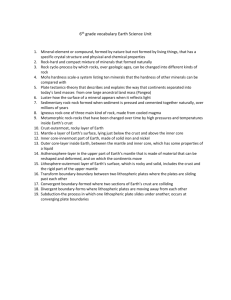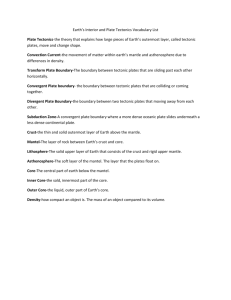Composition of the Earth
advertisement

Composition of the Earth Earth Layers The earth isn’t a solid sphere It is made of 4 major layers - Crust - Mantle - Outer core - Inner core Crust “outer skin” Continental crust is about 70km thick Oceanic crust is about 10 km thick (this is why so much ocean drilling occurs) Mantle About 2900 km thick Made of mostly Iron, Silicon and Magnesium Asthenosphere is the upper part of the mantle Very viscous Outer Core Approx 2100 km thick Made of molten Iron and Nickel Inner Core Approx 1300 km radius Solid ball of Iron and Nickel Extremely hot Stays a solid due to very high pressure Quick check T/F – all layers are made of solid rock T/F – thickest layer is the mantle T/F – Inner core is made of liquid Iron and nickel T/F – Outer core is made of silicon and oxygen Answers F – all layers are made of solid rock T – thickest layer is the mantle F – Inner core is made of liquid Iron and nickel F – Outer core is made of silicon and oxygen Plate Movement Caused by convection currents in the mantle Definitions Trench – steep walled valley where 2 plates meet Slab pull – plates subducting pulls the rest of the plate with it Ridge Push – new forming rock pushes plate away from spreading centre Definitions Spreading Centre – area where plates move apart from each other Rift Valley – a spreading centre that occurs on land Types of Movement Collisions at Plate Boundaries Divergent - Pulling apart (spreading) - New rock is often formed here Collisions at Plate Boundaries Convergent - Plates come together - Often subduction occurs (one slides under the other) **More on this in a moment** Collisions at Plate Boundaries Transform - Plates slide past each other - Produces earthquakes - Eg. San Andreas Fault Convergent Boundaries There are three different types of convergent boundaries These depend on what type of plates come together Oceanic-continental Oceanic-oceanic Continental-continental Oceanic-Continental The oceanic plate subducts beneath the continental plate Eg. Coastal BC The Juan de Fuca (oceanic) plate subducts under the North American (continental) plate This causes coastal mountains and land volcanoes Oceanic-Oceanic One plate will subduct beneath another Volcanic activity and possible islands form Continental-Continental Plates are not likely to subduct They push on each other and form mountains







